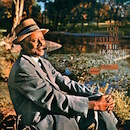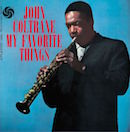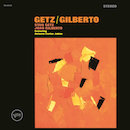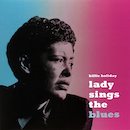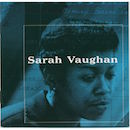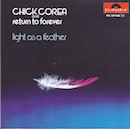Radio Stations Featuring Jazz
On the air for over 50 years of public alternative radio broadcasting, WWUH is located on the campus of the University of Hartford. Offering jazz programming Monday: 9am – Noon; Tuesday to Friday: 9am – Noon and 9pm – Midnight; and various overnight shifts, listeners can tune-in to a diverse array of jazz styles and idioms that range from big band, straight-ahead, and bebop to avant-garde, fusion, and Afro Cuban. Shows are archived for two weeks for replay over the Internet. Friday Morning Jazz host Ken Laster publishes a popular weekly podcast. Radio listeners can find WWUH at 91.3 FM and Internet listeners can stream the station at wwuh.org.
Trinity College’s WRTC radio offers a mix of jazz and blues programming 5 days a week. Starting out on Monday mornings with Kevin McCabe’s AM Jazz and wrapping up the week on Friday afternoons with the Phoenix Mix with Ben, WRTC radio has something for every jazz aficionado. FM listeners can tune in at 89.3 or listen via live streaming at wrtcfm.com.
Hands-down one of the most eclectic and independent radio stations in the country, Bridgeport’s WPKN delivers a fearless “take no prisoners” approach to alternative public radio. Offering a diverse mix of music, news, public affairs, and spoken word broadcasting, the station’s volunteer staff includes numerous jazz hosts. Time slots vary, so be sure to check out the latest programmingschedule and live stream here wpkn.org or listen on FM radio at 89.5.
With radio coverage that extends across western Massachusetts and into northern Connecticut, New England Public Radio’s WFCR 88.5 FM offers two real jewels for jazz listeners: Tom Reney’s extraordinary “Jazz a La Mode” radio show and Kari Njiiri’s superlative and wide-ranging “Jazz Safari” broadcast. Regular listening to these shows will give listeners an appreciation for the breadth and depth of jazz that’s second to none. For a deeper dive into the lively history and mystery of jazz, check out Tom Reney’s Jazz a La Mode blog as well as his new JazzBEAT podcast.
Simply stated, WBGO is one of the best jazz radio stations in the country, if not the world. Located just a scant 10 miles from Manhattan in Newark, NJ, it has numerous topflight radio hosts who add context and insight to all the music they play. WBGO has gained national prominence by producing syndicated programs like Dee Dee Bridgewater’s “JazzSet” and Christian McBride’s “Jazz Night in America”. Connecticut listeners can tune into WBGO’s live stream at wbgo.org.
Jazz 101: Recommendations for New Listeners
While no two jazz aficionados will ever agree on the top jazz albums of all time, here are ten seminal recommendations to help acquaint new listeners with some enduring jazz recordings and artists.
Regarded by many as the greatest jazz album of all time, Mile Davis’s 1959 release “Kind of Blue” has profoundly influenced generations of jazz musicians and listeners. Featuring hauntingly lyrical compositions by Miles Davis and Bill Evans, the album was a departure from the complex chord changes used in bebop and hard bop in favor of streamlined, scale-based modes. Listen how Miles Davis on trumpet, Cannonball Adderly on alto, John Coltrane on tenor, Paul Chambers on acoustic bass, Bill Evans on piano, and Jimmy Cobb on drums selflessly collaborate to create a spaciousness in sound and depth of emotion that has seen few equals.
Miles Davis – All Blues
Quietly released in 1959 as promotional record for DJs, the Dave Brubeck Quartet’s album “Time Out” became a huge international hit and one of the best-selling jazz records in history. Although frequently attributed to band leader Dave Brubeck, the hit composition “Take Five” was actually written by saxophonist and band member Paul Desmond. Inspired by a group of Turkish street musicians playing a traditional folk song, the album helped usher in a new West Coast cool jazz sound. Listen also to the highly inventive “Blue Rondo a la Turk” on the same album. Over the years, some 40-odd versions of “Take Five” have been recorded by various artists, but none quite match the fire and inventiveness of the original inspired recording.
Dave Brubeck – Take Five
Jazz pianist, composer, and arranger Horace Silver was born in Norwalk, Connecticut in 1928. His big break as a pianist occurred in 1950 when his band was asked to back saxophonist Stan Getz at a club in Hartford. Shortly thereafter, he moved to New York and worked as a sideman for many notable musicians, eventually landing a gig with Art Blakey’s Jazz Messengers. His album “Song for my Father” was released in 1965 to critical acclaim. Over his five decade long career, Silver continued to evolve musically, never abandoning his signature joyful, blues-tinged sound that helped him create well-known jazz standards like “Song for my Father”, “Doodlin'”, “Peace”, and “Sister Sadie”.
Horace Silver – Song for my Father
One of most tasteful, inventive, and original jazz guitarists of all time, in the 1950s Wes Montgomery helped usher in an entirely new approach to playing jazz guitar. Leaving behind conventional single-note soloing, he introduced chord solos and octaves to add new texture and dynamism to his music. Although he died at the early age of 45, during his mid-career he enjoyed great artistic and commercial success, adding orchestral strings to several of his recordings and moving towards pop music. Some claim there’s a direct line from Wes Montgomery to today’s Smooth Jazz sound. Judge for yourself by checking out the track entitled “Bumpin’ on Sunset” and picturing yourself cruising down LA’s Sunset Boulevard in a top-down Mustang convertible.
Wes Montgomery – Bumpin’ on Sunset
No compendium of jazz recordings would be complete without including the works of John Coltrane. Arguably one of the greatest saxophonists and composers of any era, hearing the recordings he produced during his all too short career will take you on a musical odyssey spanning the blues, bebop, post bop, modal jazz, African and Indian influences, and free jazz. His early years were marked by heroin addiction and alcoholism, but later in life he had a spiritual awakening, leaving these troubles behind and settling down with his family. Composing from his home in Dix Hills, Long Island, he produced the masterpiece “A Love Supreme”, a tribute to his love and devotion to a benevolent, universal god. Trane often takes his listeners on a musical journey, as is certainly the case with his seventh studio album, “My Favorite Things”. Listening to his soaring interpretation of the Rogers and Hammerstein classic from the “Sound of Music” will launch you straight into the jazz ionosphere.
John Coltrane – My Favorite Things
In 1962, Stan Getz collaborated with the guitarist Charlie Byrd on a Brazilian flavored album entitled “Jazz Samba”. Album sales took off and it helped launch the wildly popular musical genre known as “bossa nova” (new wave). Two years later, Getz collaborated with well-known Brazilian musicians Antonio Carlos Jobim, João Gilberto and his wife, Astrud Gilberto, to produce the seminal bossa nova recording “Getz / Gilberto”. Featuring such instant jazz standards as “The Girl from Ipanema”, “Desafinado”, and “Corcovado”, the album won four Grammys and ushered in a new interest in Latin jazz. Bossa nova’s cool, understated sound and distinctive African-influenced samba rhythms helped foster an emerging interest in “world” music and raise awareness of Brazil’s political struggles.
Stan Getz – The Girl from Ipanema
Recording his solo first album back in 1962, Herbie Hancock’s musical career has spanned nearly six decades. Always fiercely independent and creative, he has played with such jazz notables as Coleman Hawkins, Miles Davis, Ron Carter, Wayne Shorter, Freddie Hubbard, Chick Corea and many others. Never one to look back, Hancock has released more than forty albums and has been a key innovator in such diverse genres as post bop, electronic music, fusion, funk, and more. His tribute recording to Joni Mitchell entitled “River: The Joni Letters” was released in 2007 and won both the Album of the Year and Best Contemporary Jazz Album at the 5oth Grammy Awards. Listen to the melancholy track “Edith and the Kingpin” to hear how Hancock masterfully adds chordal accents and angular piano work to this melodic composition.
Herbie Hancock – Edith and the Kingpin
Jazz vocal interpretations were changed forever when fifteen year old Billie Holiday came onto the New York jazz scene in 1930. Her sad but majestic voice caught the attention of talent agent John Hammond and her recording career was launched, beginning with Bennie Goodman and continuing with such notables as Teddy Wilson, Count Basie, Artie Shaw, Paul Whiteman, Lester Young and others. Despite a seemingly limiting one octave vocal range, Lady Day could pack more heartfelt expression and yearning into a song than anyone before or after her. Her signature recording “God Bless the Child” combines both bounce and innocence and sold more than 1 million records in war torn 1941. Equally important is her rendition of the mournful composition “Strange Fruit”, a haunting elegy to the racism she encountered while touring the Jim Crow era South.
Billie Holiday – God Bless the Child
As a teenager growing up in the late 30s and early 40s in Newark, NJ , Harlem and the Apollo Theater were just a short trip across the Hudson River for the young Sarah Vaughan. After winning a contest at the Apollo, Sarah connected with Earl “Fatha” Hines and Billy Eckstine, two prominent musicians who, with the able assistance of band members Dizzy Gillespie and Charlie Parker, helped create bebop. Sarah toured with the band for two years, then struck out on her own solo career. Over the course of her career, she recorded a number of commercial pop hits and jazz recordings on the Columbia, Mercury, and Roulette record labels. On this album, her recordings of “Lullaby of Birdland”, “April in Paris”, and “Embraceable You” showcase her incredible vocal range and operatic stylings.
Sarah Vaughan – Lullaby of Birdland
Chick Corea began his career in the 1960s playing piano for such notables as Cab Calloway, Herbie Mann, Willie Bobo, and Mongo Santamaria. After absorbing the Latin style of these musicians, he moved onto more dissonant and avarde garde groups, eventually joining Miles Davis’ band and appearing on his albums “Filles de Kilimanjaro”, “In a Silent Way”, and “Bitches Brew”. By the early 1970s, jazz fusion was in full swing and Corea successfully combined this with the Latin elements he knew so well. On this fine recording, Chick Corea teams up with tenor player Joe Farrell, electric bassist Stanley Clarke, drummer Airto Moreira, and vocalist Flora Purim to create one of the most successful and memorable jazz fusion recordings of all time.
Chick Corea – Captain Marvel









